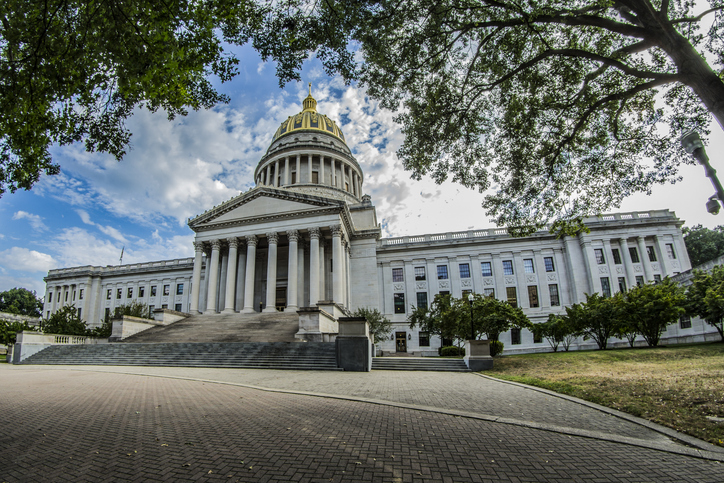Black Unemployment 2020: Jobs Report Wages Plunge, Men's Rate Jumps
Don’t Believe The Hype: Black Men’s Unemployment Rate Jumps As Wages Keep Dropping
The president was doing everything he could to spin the latest employment numbers amid what he has repeatedly called “the greatest economy in the history of our country.” But according to the December jobs report, that claim was far from the truth. In addition, wage growth hasn’t just stalled; it’s worsened, rendering Friday’s brief all-time high in the stock market (that Donald Trump bragged about before it quickly plunged) as relatively insignificant in the larger context of America’s jobs.
MORE: Low Unemployment Rate Contradicts The Truth: No ‘Good Jobs’ And Low Wages
While the unemployment rate for all Americans held steady at 3.5 percent, it actually dipped for white people while jumping for Black folks — especially Black men. In just one month’s time, the rate of unemployed Black men went from 5.1 percent to 5.9 percent, inching closer to that 6.6 percent rate from one year ago. Black women’s unemployment rate also rose from November to December, albeit a bit more modestly from 4.9 percent to 5.0 percent. Likewise, the unemployment rate for Black folks overall rose — and has been slowly but surely rising since August — from 5.6 percent to 5.9 percent, all of which undermines persistent claims from Trump administration that Black workers are thriving under his presidency.
Meanwhile, the exact opposite was true for white workers, as the unemployment rate for men in that group shrank from 3.0 percent to 2.8 percent along with women from 2.9 percent to 2.8 percent. For anyone keeping track, those unemployment numbers are nearly half of what they were for Black workers in December and well under the national average.
Economists bristled at Friday’s job report that fell well short of expectations by adding just 145,000 new jobs last month, which was an indication of just how much job growth has slowed in the country.
On top of that, most of the jobs added last month were low wage gigs in a continuation from a trend seen following November’s jobs report that underscored just what kind of employment opportunities were actually hiring.
Trump bragged Friday morning how Friday morning’s gains in the Dow Jones Industrial Average had never been seen under any other presidency, but political pundit Keith Boykins quickly squashed that false notion (lie?) by tweeting out stock market averages for each of the previous two Democratic commanders-in-chief. The numbers showed that both Barack Obama and Bill Clinton achieved much higher stock market successes within the same time frame that Trump has been in office.
Citing data from the U.S. Bureau of Labor Statistics, Boykins also tweeted the number of jobs added annually since 2013, with the calendar year of 2019 being tied for the lowest in that time span.
It also appeared that Trump was secretly disappointed with the latest jobs report if history was any indication. Before he was president, Trump’s criticism of Obama was no secret. Near the end of Obama’s first term, Trump tweeted (surprise!) that any jobs report with fewer than 300,000 new jobs added and “no real job growth” could mean that a recession is on the way. It was unclear if the president still felt the same way after Friday’s lackluster jobs report.
Sadly, this is where Trump may finally be right. The recent proliferation of low-wage jobs has left a bleak outlook when it comes to the country’s overall employment situation, as December’s jobs report showed the “weakest wage growth since July 2018,” according to Washington Post economics correspondent Heather Long.
The Economic Policy Institute (EPI) responded to the November jobs report with a somber reality check for those celebrating the low levels of unemployment.
“Nominal wages rose 3.1% year-over-year in November, which is slower than expected in an economy that has had historically low unemployment,” EPI wrote before continuing. “It is important to remember that periods of stronger wage growth for production/nonsupervisory workers in this recovery tend to be followed by periods of relatively weaker growth. Definitely a promising sign if the stronger trends continue, but the slowdown for all private sector workers is still troubling.”
The Brookings Institute also previously released its analysis of the American economy and found that even “as the U.S. economy hums along at a favorable pace, there is a vast segment of workers today earning wages low enough to leave their livelihood and families extremely vulnerable.” Brookings went on to write that “53 million Americans between the ages of 18 to 64—accounting for 44% of all workers—qualify as ‘low-wage.’ Their median hourly wages are $10.22, and median annual earnings are about $18,000.”
For perspective, “30% of low-wage workers (16 million people) live in families earning below 150% of the poverty line. These workers get by on very low incomes: about $30,000 for a family of three and $36,000 for a family of four,” Brookings added.
And the recession fears that Trump tweeted about eight years ago were very real after the December jobs report. Another recession would disproportionately affect Black workers in particular. Notwithstanding, Trump’s looming impeachment trial along with the employment repercussions from his new military conflict with Iran, trade war with China and a series of misguided tariffs have only helped the racial wage gap continue to widen.
SEE ALSO:
‘Racial Propaganda’: Here’s What Will Happen To 2020 Olympians Who Protest
Delusional Rep. Steve King Cries Over White Nationalist Label After History Of Racism



















